Walk anywhere in British Columbia and you’ll be less than a metre from a spider. With more than 700 known species in the province, arachnids are everywhere, from mountaintops to intertidal zones. These eight-leggers are endlessly diverse and surprising—from the jumping spiders that dance to impress prospective mates, to the wily crab spiders that disguise themselves as flowers. Here is an introduction to 10 B.C. spiders—some common, some rare—with insights from the researchers who study them.
Tarantula
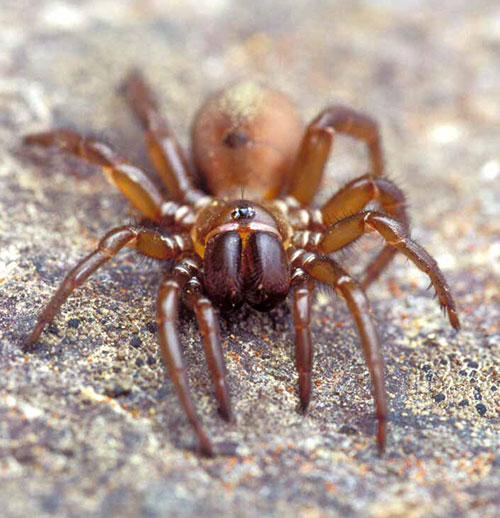
Tarantulas in British Columbia? You bet?or at least a few “tarantuloids,” their close relatives. Six of the seven found in Canada live here. Though far smaller than their large, hairy cousins in other parts of the world, B.C.’s tarantuloids play an important ecological role in our environment, primarily through insect control.
International tarantula expert Rick West spotted Hexura picea in the ancient rainforest of Vancouver Island’s Carmanah Valley in 1990—the first sighting of the species in Canada. West was gathering specimens when he noticed some unusual funnel-shaped webs in the moss beds. He collected a spider, but nearly dropped it when he later slipped on some rocks while fording a creek.
“It was worth the bruises,” says the Victoria resident, who managed to protect the specimen for future study—and subsequently discovered that these tarantuloids rely on deep-moss habitat found only in old-growth forests.
Claudia Copley, a Royal BC Museum entomologist, is also studying the biodiversity of ancient coastal forests. One of her interests is the Pacific foldingdoor spider, Antrodiaetus pacificus, a tarantuloid that builds deep, silk-lined burrows.
In B.C.’s Interior, Kootenay biologist Jakob Dulisse of Nelson has found two other tarantula-like spiders, A. cerebus and A. pugnax. The latter appears to be expanding its range up into the Interior mountains, possibly as a result of climate change.
Orb Weaver
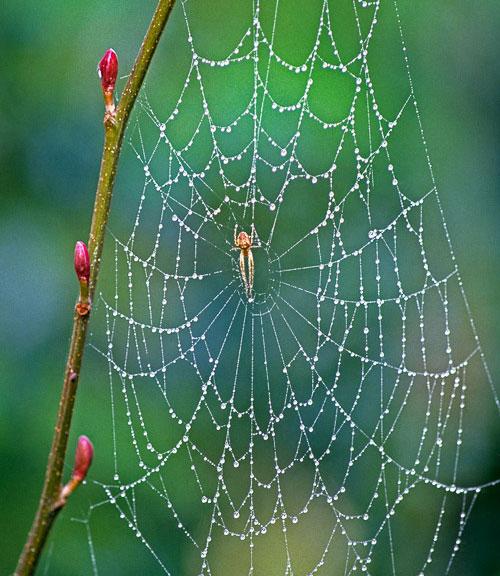
These classic web spinners catch our attention in autumn when the females grow large in preparation for breeding and their webs are highlighted by dew or frost. The most common of the orb weavers in southwestern B.C. is the introduced garden or cross spider, Araneus diadematus. Rick West, however, is a fan of Argiope trifasciata.
“It is a gorgeous spider with yellow- and black-banded abdomen and legs and silvery carapace that lives in salt marshes. Its quirky characteristic is a bold zigzag pattern in the centre of its web. The theory is that the pattern deters large creatures from flying into it.”
Entomologist Staffan Lindgren of the University of Northern British Columbia receives calls every year from people asking him to identify strange orb weavers—especially Araneus gemmoides, the aptly named cat-faced spider.
“This is a very common native spider that likes to spin its web near porch lights, so people notice it.”
Lindgren assures callers that the orb spiders are harmless, as gentle as the heroine of Charlotte’s Web, likely an Araneus species. Like others who study these creatures, he is passionate about getting across the non-aggressive nature of spiders, and the critical role they play in insect control.
“The density of spiders is astounding, hundreds of thousands of spiders per hectare all controlling insect populations. They are critical for any ecological balance.”
Sheet Web Weaver
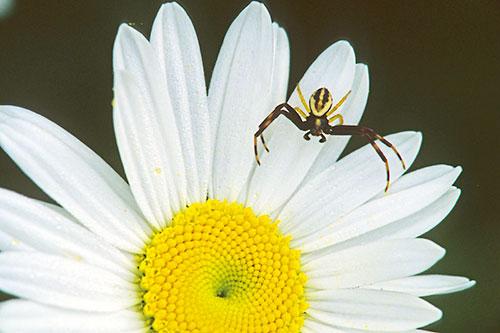
In fall 2002, Lindgren received his strangest phone call ever. Locals were reporting that a field near the small community of McBride, east of Prince George, was covered with a 24-hectare web crawling with spiders. Apparently, some 50 million tiny sheet web weavers, mostly Collinsia ksenia, had attempted to balloon away in a mass dispersal. But when unfavourable weather conditions thwarted their repeated attempts, their layers of silk built up like a blanket. While populations of spiders have been known to disperse in groups, such massive webs are rare. The spiders’ handiwork earned them international media attention.
Jumping Spider
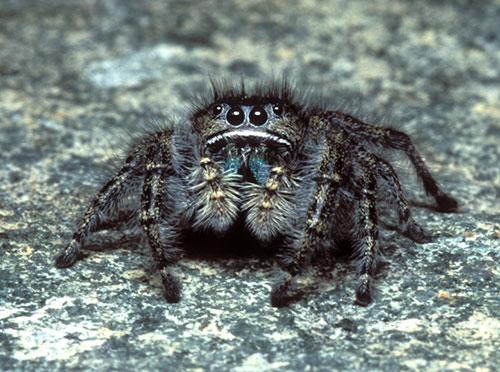
Spider lovers can’t resist the big eyes, athletic prowess, and quirky courtship rituals of B.C.’s native jumping spiders. University of British Columbia entomologist Wayne Maddison is the go-to guy on the province’s Salticidae species.
“I love them because they aren’t the sit-around-and-wait types,” he says. The jumping spider uses its huge eyes to scan for prey, then leaps to attack its victim. This spider can jump up to 50 times the length of its own body, propelled by blood pumped to its legs.
Maddison delights in the strange mating behaviours of jumping spiders. The Habronattus decorus males court their partners by waving around their shocking red and metallic-pink abdomens. “It is a real shame they aren’t a foot long, because they are like birds of paradise.”
H. oregonensis are known to pose like muscle men on a beach, showing off the bronzy sheen of their swollen front legs. And the mating displays of H. jucundus are so exuberant, says Maddison, “triple the Macarena and you still can’t beat this one.”
Crab Spider
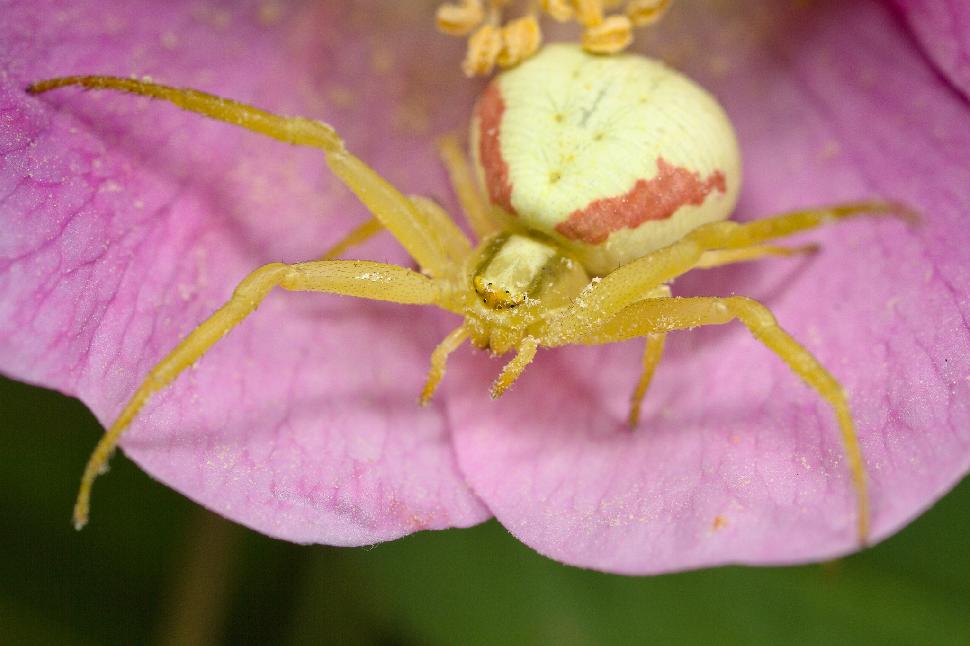
The crab spider is more subdued creature, and may be found waiting stealthily for prey among the flowers, making use of its natural camouflage. Rob Cannings, curator of entomology at the Royal BC Museum, particularly likes the red-striped crab spider, Misumena vatia.
“Other than its amazing ability to change colour depending on the flower it is sitting on, what I love about this spider is that anyone who is walking along a trail or in a garden can spot them in the flowers, so they make great introductions to the wonderful world of spiders.”
Daddy Long-Legs
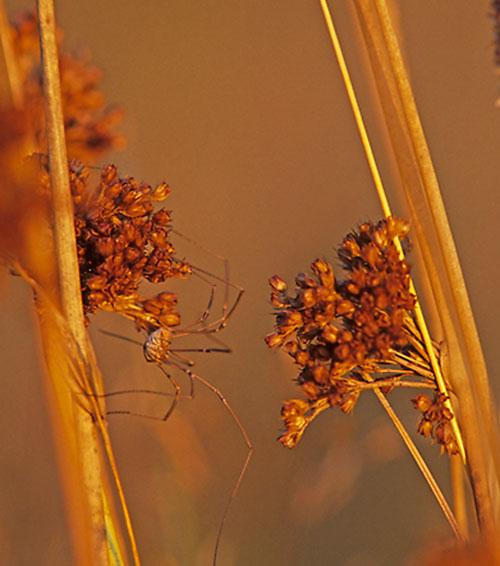
Daddy long-legs are one of the best-known spiders in the world—in part because people use this common name to describe a variety of species, some of which are spiders, and some not.
Perhaps the most commonly encountered daddy long-legs spider is the introduced cellar spider, Pholcus phalangioides. Once cave dwellers, these spiders have adapted to cellars and expanded their range around the world.
One of Robb Bennett’s early research projects was a study of the mating behaviours of this species, conducted in his basement where a large population had accumulated. That is, until Bennett’s father came to visit.
“He thought he’d help out by vacuuming and wiped out my test group,” explains the Victoria entomologist. “However, within a month they were back in the same numbers. That gives you a clue as to why they are so successful.”
Bennett’s favourite daddy long-legs are two that occupy B.C.’s driest, hottest regions. Pholcophora Americanais found throughout the Interior grasslands, while the much rarer Psilochorus hesperus lives only in the south Okanagan.
Black Widow
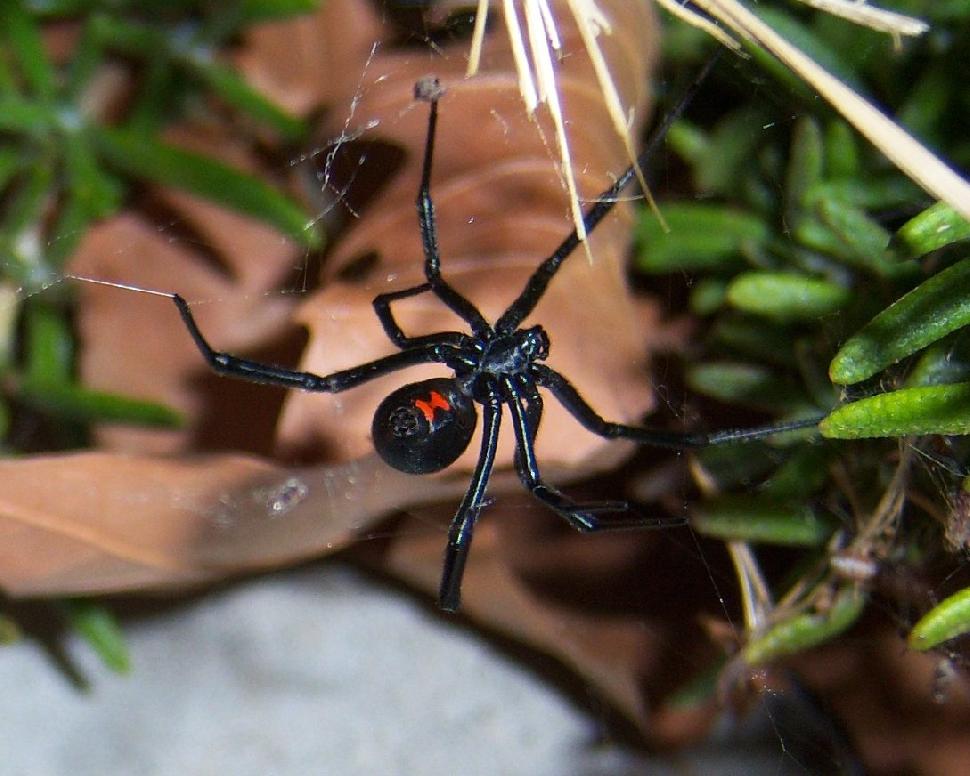
Maxence Salomon, a PhD student at Simon Fraser University, is making new discoveries about the western black widow, Latrodectus hesperus, a native spider with a largely undeserved reputation. “These are shy animals and the more I work with them, the more I am fascinated with them.”
Fellow SFU grad student Samantha Vibert agrees. “Black widows are not aggressive. I handle them with my bare hands all the time and they simply go into defensive stance, tilting their abdomen at you and shooting silk.”
While the spider’s venom is neurotoxic to humans, even if one does bite a person, the small amount of venom injected is very rarely fatal to a person.
Hobo Spider
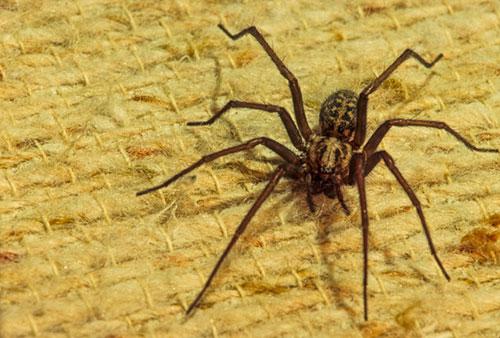
Like the black widow, the introduced hobo spider, Tegenaria agrestis, has gotten a bad rap—particularly from the medical profession. Festering wounds are frequently misdiagnosed as hobo spider bites, even though this European import is not aggressive toward humans.
“What people attribute to spider bites are often not, and more likely bacterial infections picked up from other sources,” says Vibert.
She says she frequently advocates for spiders to counteract the myths. “I do this by getting people interested in their forms of communication, which they do through smell, percussion, silk spinning, and dancing.”
Bog Spider
Gnaphosa Snohomish, the Georgia Basin bog spider, is one of B.C.’s rarest arachnids, found in just a few sphagnum bogs in the Greater Vancouver area. These creatures are “like a window into the earlier ice age,” says researcher Robb Bennett.
Unfortunately, these city bogs are under intense pressure from urban and agricultural development (bog conditions are ideal for commercial cranberry farms). And while an awareness of spiders and their contribution to biodiversity is growing among the general public, these ancient arachnids could disappear before scientists have time to learn their many secrets.
Wolf Spider
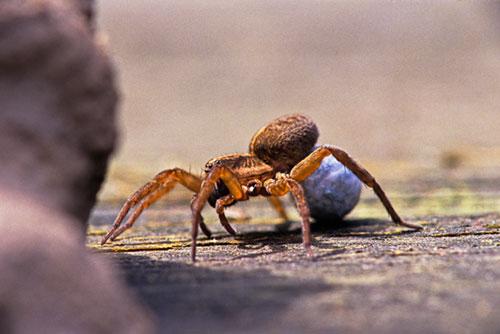
The ground-dwelling wolf spider, which does not weave a web, is abundant in B.C., ranging from intertidal zones to alpine meadows. Retired arachnologist Charlie Dondale, who lives near Ottawa, identifies Schizocosa minnesotensis as a standout among this large group. Normally, it is found in the dry southern Interior, but Dondale came across a population more than 2,000 kilometres away while collecting Yukon specimens in Kluane National Park.
“There are no records of this species in the intervening area,” says Dondale, “so how did it get all the way to Yukon?”
Such mysteries can sustain the interest of spider researchers over a lifetime.
“Studying spiders isn’t just about spiders,” says tarantula expert Rick West. “It is about the land, the plants, the beauty, and the cultures that revered them.”
“I think spiders are amazing portals to answer interesting questions,” says black-widow researcher Maxence Salomon. “They are so diverse in their foraging modes, morphology, mimicry, ornamentation, habitat, and colonization, and they address just about every ecological question.”

